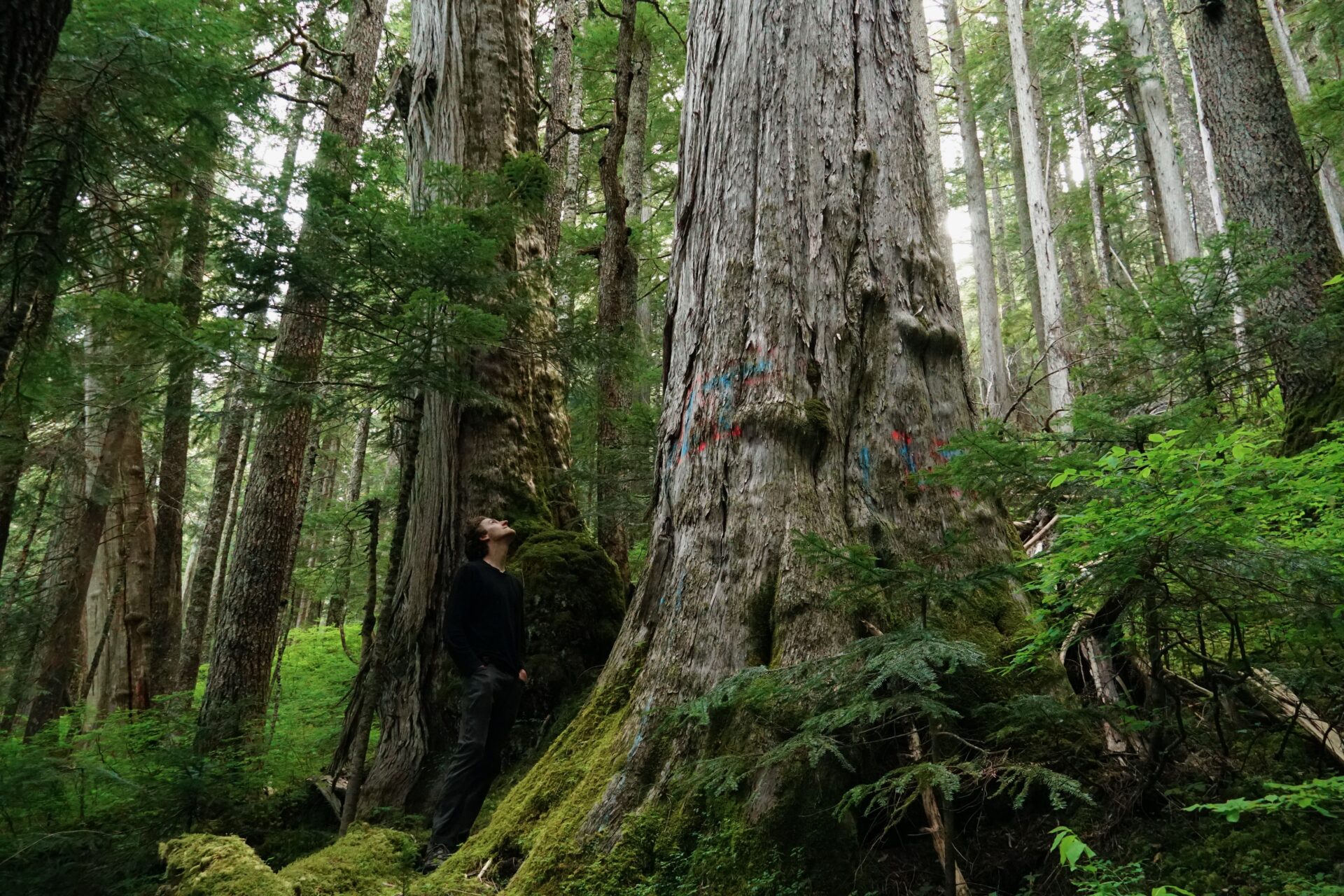Report: Endangered old-growth forests identified for interim protection targeted by logging industry
Media Release
Report: Endangered old-growth forests identified for interim protection targeted by logging industry
November 12, 2025
Five years after provincial old growth commitments, advisory panel experts warn about the lack of progress in conservation as old-growth forests are pushed to the brink.

Towering yellow cedars in the Tsitika River watershed in a forest prepared for auction by government controlled BC Timber Sales in the fall of 2025, despite being recommended for deferral in 2021 as ancient old-growth (Photo by Joshua Wright).
FOR IMMEDIATE RELEASE
UNCEDED xʷməθkʷəy̓əm (MUSQUEAM), Sḵwx̱wú7mesh (SQUAMISH) AND səlilwətaɬ (TSLEIL-WAUTUTH) TERRITORIES/VANCOUVER – A new independent expert report titled ‘Closer to the Brink’ finds that despite commitments to protect old growth and change course in forest stewardship, the ecological integrity of B.C.’s forests continues to decline.
Continued industrial overcutting, climate change fueled wildfires and slow conservation progress are eroding the capacity of the province’s globally rare forest ecosystems to sustain biodiversity, First Nations values, carbon sinks and a diverse economy.
The report by forester Dave Daust and ecologist Karen Price, both members of the provincial Old Growth Technical Advisory Panel (TAP), reviews progress since the province committed to full implementation of the Old Growth Strategic Review (OGSR) in 2020 and concludes that the province has so far failed to deliver the promised shift.
“Five years ago, the provincial government committed to a long-needed shift in forest stewardship, putting ecological health, climate adaptation and human communities above short-term corporate profit. Unfortunately, the forests show little evidence of such a shift: deferral recommendations failed and the most at-risk big-treed forests are still targeted for logging,” said report co-author Karen Price. “We’ll know that the province is taking the intersecting crises of our time seriously if they ensure that these irreplaceable big-treed forests are included in the commitment to protect 30 percent of the province by 2030.”
Key findings of the new report are:
- At-risk forests recommended for deferrals are being clearcut at a higher rate than other old growth: Logging was four times more likely in at-risk old-growth forests recommended for logging deferrals in 2021 compared to other old growth.
- Old growth loss overall continues: Nearly five percent of the 11 million hectares of old growth mapped by TAP in 2021 has been clearcut, burned, or removed from the public land base. About 100,000 hectares of old growth have been logged in the last four years since 2021 (about 100 soccer fields per day).
- Conservation progress stalling: Only about half of the 2.6 million hectares of the most at-risk old growth mapped in 2021 has voluntary logging deferrals and only about six percent has been permanently protected. The draft Biodiversity and Ecosystem Health Framework remains unfinished, and decision-makers continue to prioritize timber supply over ecosystem health.
“Old growth forests across B.C. continue to fall despite years of promises to protect them. The failure to fully deliver on old growth commitments is a profound betrayal of trust in First Nations, the public, and future generations. As the climate crisis deepens, allowing these irreplaceable forests to be logged is reckless and short-sighted. We will not stand by while short-term profits are placed above the sacred duty to protect the living systems that sustain us all, and we want to see protections for old growth put in place,” said Grand Chief Stewart Phillip, president of the Union of BC Indian Chiefs.
The report calls on the provincial government to deliver on its own commitments by:
- Accelerating implementation of the OGSR recommendations — keeping at-risk old growth standing, setting milestone dates, finalizing the BEH Framework, and providing transparent, independent state-of-the-forest reporting.
- Prioritizing protection of high-productivity, big-treed forests to meet 30×30 targets, rather than focusing on low-productivity ecosystems not at risk from logging.
- Supporting First Nations leadership with funding and capacity to achieve conservation solutions that align ecological, cultural, and community well-being.
“These stark findings show that speeding up logging deferrals and Indigenous-led conservation solutions for at-risk old growth is more urgent than ever. Proclaiming conservation intentions for the last big old trees without following through has painted a target on the back of the most endangered old growth stands,” said Jens Wieting, senior policy and science advisor at Sierra Club BC. “Business as usual for short term profit won’t help the logging industry in the long-term, it will just make it harder to transition to sustainable forestry while depriving current and future generations of the beauty, biodiversity and benefits of these globally rare ecosystems.”
-30-
Media contacts
Karen Price, ecologist and report co-author
pricedau@telus.net
Grand Chief Stewart Phillip, President | UBCIC
(email aurora@sierraclub.bc.ca for contact info)
Shelley Luce, Associate Director & Campaigns Director | Sierra Club BC
shelley@sierraclub.bc.ca
Jens Wieting, Senior Policy and Science Advisor | Sierra Club BC
jens@sierraclub.bc.ca
